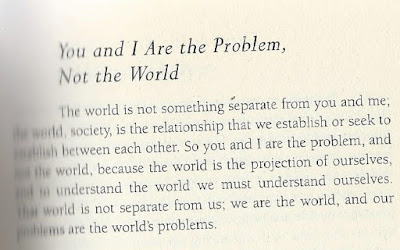 |
| My Clematis running wild. |
Thursday morning: I was up and about quite early today. I
ventured out into my garden to feed my fishes and my feathered friends. The clematis
looks amazing, in full bloom and climbing all over my fence and my little shed.
The camellias have got quite a few flowers on them as well. I potted those
sunflowers far too early though. I put them out on my bench to toughen them up,
but I can’t risk planting them yet because of the fear of frost. After I had
done the washing up and a couple of other bits of housework that I’ve neglected
lately, I sat in the kitchen to give full attention to my new album which was
recommended to me by a friend of mine.
It is called Birds
Requiem by Dhafer Youssef. He was
born in a small fishing village in Tunisia in 1967 and moved to Europe in 1990
to pursue a career in Jazz. He is a singer and Oud player. I didn’t know what an Oud was, so I looked it up. It is
a short-necked stringed instrument very similar to a lute. This album was
recorded in Gothenburg Sweden & Istanbul in 2013. I didn’t know what to
expect. I thought it would be mainly North African type instruments but apart
from the Oud and the Kanun (A Kanun
is a stringed instrument, a bit like a zither or a psaltery) there are clarinets,
trumpets, electric guitars, electronics, piano, double bass and drums. Four of
the tracks are part of a suite called Birds
Requiem. I must say the vocals of Dhafer Youssef are quite astounding, he
can hold a note for an eternity.
 |
| An Oud. |
The voice is used as a major instrument to
stunning effect. I love the piano playing of Kristjan Randalu particularly on
track 2 called Sweet Blasphemy. Some
tracks such as Blending Souls And Shades I
would describe as jazz-rock. While I was listening to the music, I was aware of
the birds singing in my garden. It wasn’t a distraction, I liked it, they
seemed to complement the music. The music was about birds after all. Track 5
was called Whira and is an elegy for
Dhafer’s mother. I loved the delicate double bass playing. The intro to Track 7 called 39th Gulay really rocked out. That track is dedicated to the city
of Istanbul where east meets west, and this album certainly does that as well. Seudah is dedicated to Jon Hassell who
is a trumpet player influenced by Miles Davis. He is also influenced by minimalism
& World Music. Jon Hassell has worked with Terry Riley whose Rainbow In
Curved Air I bought last year. That is all further evidence for everything
being connected as I said recently.
 |
| A Kanun. |
I also enjoyed track 10 which is called Ascetic Journey. As you know Asceticism
is a journey towards spiritual transformation, where the simple is sufficient
and the bliss is within. This album proves that is true on many tracks. In fact,
some parts of the album reminded me of the Tony
Scott album for Zen Meditation that I was listening to recently, where less
is more, and you can enjoy the silences between the notes as much as the music
itself. Silence becomes an art form if it is nicely framed. The final track Whirling Birds Ceremony I had heard once before on YouTube and I
liked it so much I decided to buy the album. If you scroll down you can listen
to it and judge for yourself. I think you will agree that it is brilliant.
 |
| Dhafer Youssef. |



















